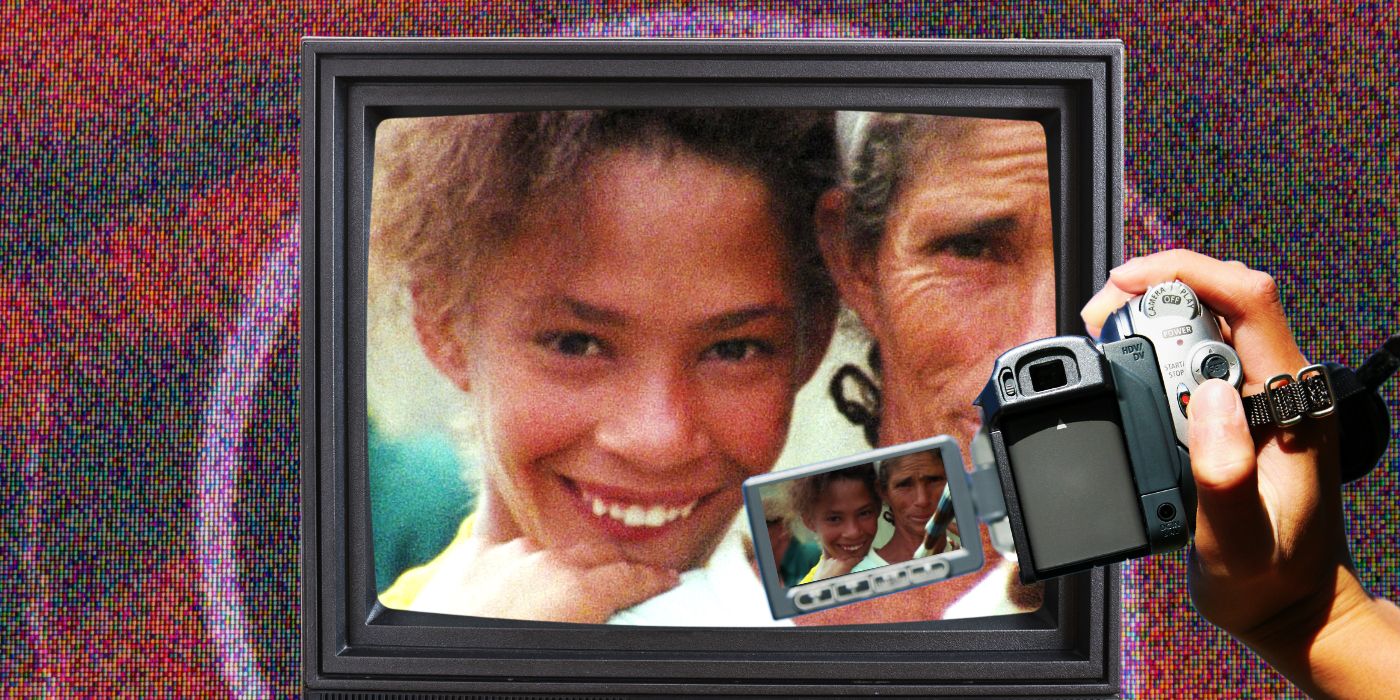The home movie is one of the first forms of a moving image that everyone encounters. Before you are even aware of what a camera is, you have most likely been filmed by one. Seeing that image played back is a striking moment, yourself reflected in the same space as movie stars, your story occupying the same place as stories beyond your wildest dreams. In his 1983 essay film, Sans Soleil, Chris Marker takes that feeling to unimaginable heights.
A radical departure from documentary norms, the film takes Chris Marker's own footage, footage from other filmmakers, and shapes them into something greater than the sum of its parts. Marker, known as the essayist of the Left Bank movement of the French New Wave, radically shaped the genre of documentary to come with this film, breaking it apart, so everyone could play with the pieces.
Chris Marker Breaks the Rules With 'Sans Soleil'
In order to break something apart, you need to understand how something works. The greatest rule breakers in cinema are people who know the rules better than the filmmaking purists of the world. Chris Marker was a true documentary veteran, starting his career as a filmmaker working alongside Left Bank comrade Alain Resnais, most notably helping to write the script for Night and Fog, Resnais' film on the Holocaust, arguably the greatest piece of documentary filmmaking ever made. Following that, he worked on Resnais' film Toute la mémoire du monde, covering the national library of France, and Statues Also Die, a collaborative effort with Resnais and Ghislain Cloquet, which was banned in France due its critique of French colonialism. To say that Marker was a seasoned documentary filmmaker by the time he got to making Sans Soleil is an understatement. What makes the film so great, and still worth talking about 40 years on, is how it shatters what a documentary is perceived to be. One would assume a documentary would be objective, educational in a journalistic, fact checked manner, and focus on roughly one subject. Sans Soleil disregards all of those rules.
Chris Marker openly flaunts the constructed nature of the medium, writing in the narration of the film "Frankly, have you ever heard of anything stupider than to say to people, as they teach in film schools, not to look at the camera?" Sans Soleil covers 1980s consumer culture, revolutions across the world, cats, Japanese rituals, volcanoes erupting in Iceland, poverty, longshoremen in Guinea-Bissau, and Alfred Hitchcock's Vertigo, all in under two hours. Instead of making the observations in the film his own, he uses a pseudonym, and has someone else read them as fictional letters this pseudonym wrote her from his extensive travels as a filmmaker. The film stretches the genre to its absolute limit.
With that in mind, what is Sans Soleil really about? Why is the audience invested in this frenetic montage of images? Firstly, Marker has filmed, and also sourced from other filmmakers, really excellent footage. The sequence of the town covered in ash in Iceland, the video synthesizer segments, and the cuts between media like anime to documentary footage, all stand out as incredibly visually compelling. Marker creates a film collage, where every element is treated with the same weight as every other element. A revolution sparking in Guinea-Bissau is treated the same as subway riders in Tokyo. This is inherently interesting as a viewer, because it is so different from what you see in traditional documentary filmmaking. This is where Marker's skill as an essayist comes into play.
Chris Marker's Directorial Hand Is All Over 'Sans Soleil'
Whereas his collaborations with Resnais were often objective, detached to a degree, Chris Marker's hand is so present in Sans Soleil. You feel his opinions on every subject come through. The footage, whether he shot it or someone else did, feels real, and lived in. The film makes bold philosophical statements on the nature of images, the construction of history, and also on Pac-Man, and Manga. And what makes this even more interesting is how much Marker downplays his role as an auteur. His credit in the film is last in the credits, and only as "Conception and Editing". The audience really has to try to know that he even made this film from just watching the film itself. This dynamic of a hyper personal filmmaking style combined with removing your identity from that style as much as possible creates a beautiful tension in the film, and leaves the viewer with more questions than answers when it ends. It strings together a tapestry out of all the elements Marker has so carefully crafted in this film.
From everything Sans Soleil has to say, the most poignant message is about memory. Memories of yourself, memories of history, of place, of everything. The narrator reads "I remember that month of January in Tokyo. Or, rather, I remember the images I filmed in the month of January in Tokyo. They have substituted themselves from my memory. They are my memory. I wonder how people remember the things who don't film, don't photograph, don't tape? How has mankind managed to remember?" What is put onto film, becomes our memory.
However, what is on film, is not real. Iit is an image of something that once was, a moment we can never return to immortalized on celluloid. The danger of that, is that an image can easily be changed, corrupted, used in a manner opposite to its intention. There is no way around this but to be conscious of that fact. What you cannot remember will be replaced by a film of it. But when you know that, you can recognize it. You can take images of your past, or history's past, and reconfigure them into something new, something better.
That is what makes Sans Soleil such a special film. 40 years have passed, and Chris Marker's meditation on the nature of film itself has only gotten more and more prescient. His deconstruction allows the viewers themselves to enter into the filmmaking process. To take that feeling of seeing yourself on screen, and doing something meaningful with it. Chris Marker harnesses the power of home movies to create a beautiful film in Sans Soleil.


